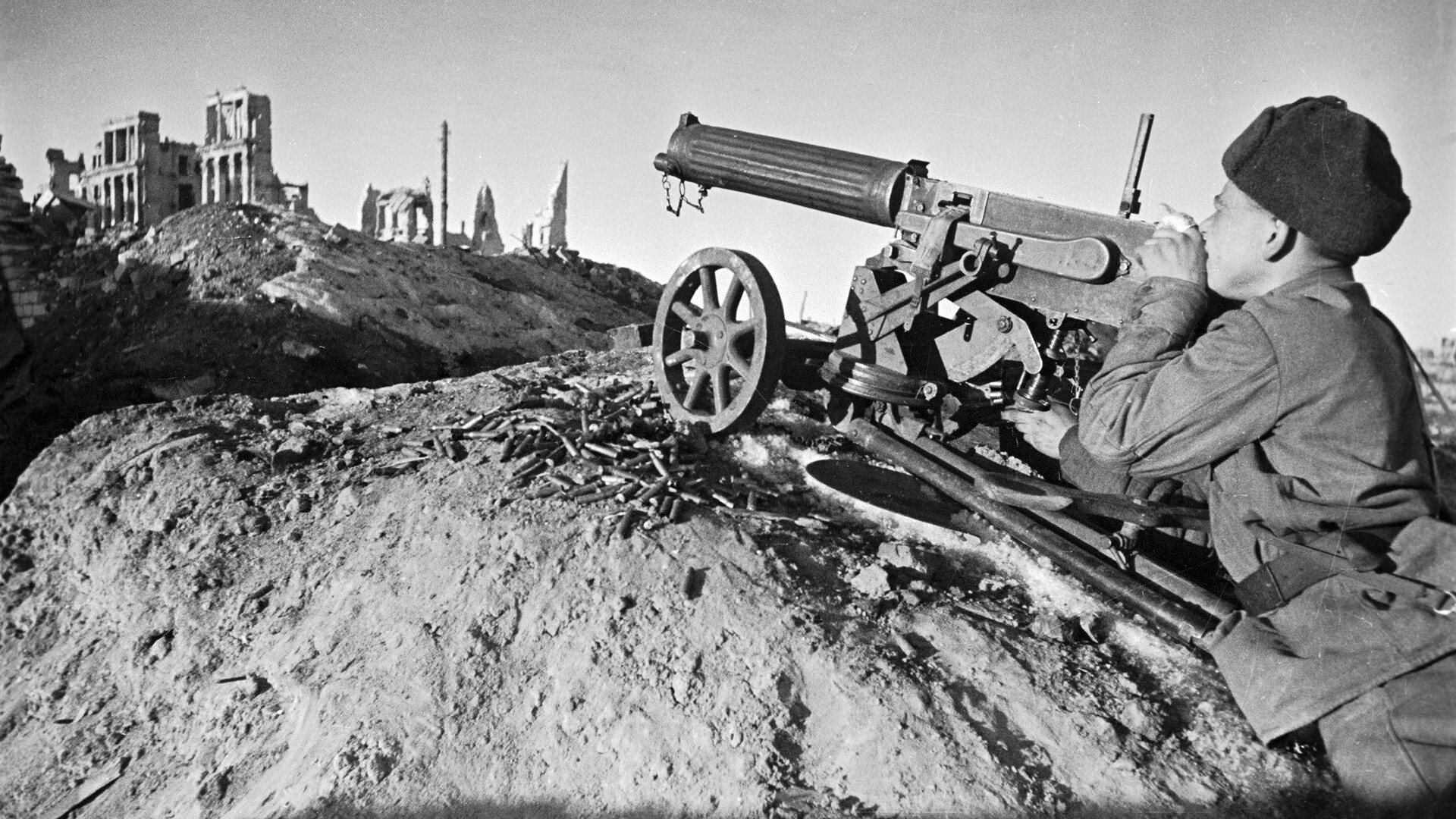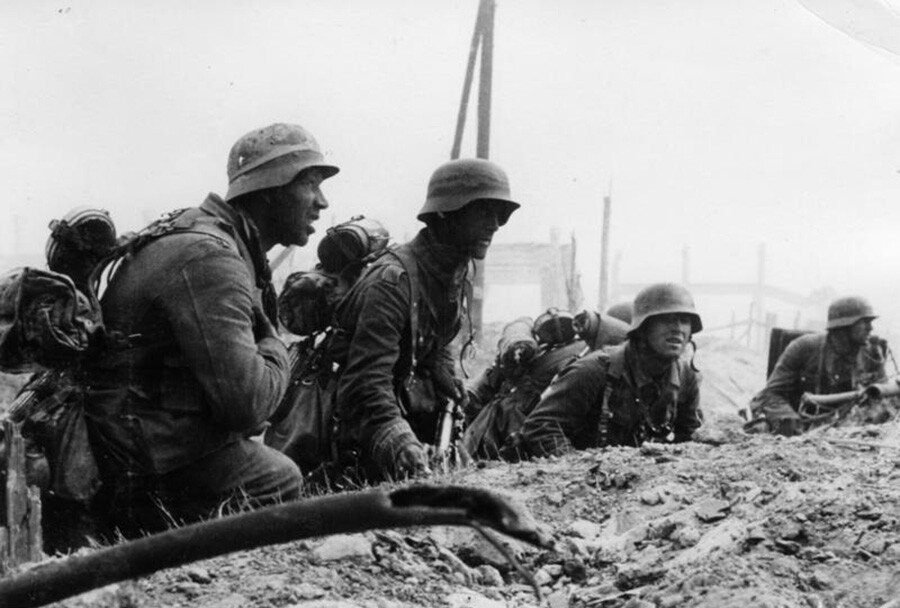
A Soviet machine gunner in Stalingrad.
Georgy Zelma/SputnikBy mid-October, the German 6th Army of General Friedrich Paulus already controlled a significant part of Stalingrad. However, General Vasily Chuikov's Soviet 62nd Army still held several city blocks and bridgeheads on the riverbank and continued to offer fierce resistance to the enemy.
Intending to capture Stalingrad before the arrival of cold weather, the German command scheduled the decisive assault for October 14. On the front of only five kilometers, a powerful strike group of three infantry and two tank divisions was deployed.

German infantry in Stalingrad.
German Federal ArchivesThe storming of Soviet positions was preceded by a large-scale air and artillery preparation. All in all, Luftwaffe bombers took to the air more than 2,500 times that day.
"The engines of dive-bombers roared, bombs howled, anti-aircraft gun shells burst in the air and their tracer trajectories dotted the sky,” recalled Chuikov. “Everything around was humming, groaning and tearing… In the distance, the walls of houses were crumbling, the hulls of the tractor factory shops were burning.”
The most fierce and bloody battles took place in the area of the tractor factory and the Barrikady factory located on the bank of the Volga River. Small groups of Soviet soldiers, having found themselves surrounded, continued to restrain the enemy's actions.
By three o'clock in the afternoon, German tanks were only three hundred meters from Chuikov’s command post and engaged in battle with a company of headquarters guards. "If the enemy could come even closer, we would have had to fight the German tanks ourselves," the commander recalled.
The Red Army withstood the first onslaught, although, during the following days, the Germans, at the cost of heavy losses, managed to seize the tractor factory, break through to the Volga and split the forces of the 62nd Army. Nevertheless, they could not break and destroy the troops defending the city.
Even pressed against the river and blocked from three sides, the Soviet units continued to fight and hold their positions for another month, until the Red Army launched a large-scale counteroffensive.
If using any of Russia Beyond's content, partly or in full, always provide an active hyperlink to the original material.
Subscribe
to our newsletter!
Get the week's best stories straight to your inbox